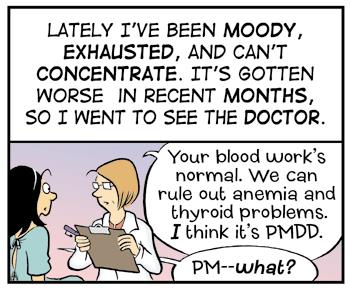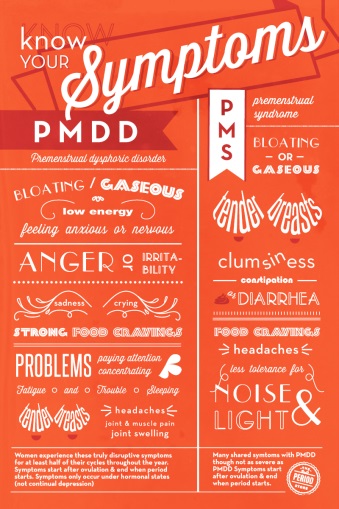Written By: Debbra A. Livingston, MSN, ARNP, BC, Jacksonville District

Premenstrual syndrome (PMS) has a wide variety of symptoms, including mood swings, tender breasts, food cravings, fatigue, irritability and depression. On average, as many as 3 of every 4 menstruating women have experienced some form of premenstrual syndrome.
Symptoms tend to recur in a predictable pattern. But the physical and emotional changes you experience with premenstrual syndrome may vary from just slightly noticeable all the way to intense.
Still, you don't have to let these problems control your life. Treatments and lifestyle adjustments can help you reduce or manage the signs and symptoms of premenstrual syndrome.
The list of potential signs and symptoms for premenstrual syndrome is long, but most women only experience a few of these problems.
Emotional and behavioral symptoms
- Depressed mood
- Tension or anxiety
- Crying Spells
- Mood swings and irritability or anger
- Appetite changes and food cravings
- Trouble falling asleep (insomnia)
- Social withdrawal
- Poor concentration
Physical signs and symptoms
- Joint or muscle pain
- Headache
- Fatigue
- Weight gain related to fluid retention
- Abdominal bloating
- Breast tenderness
- Acne flare-ups
- Constipation or diarrhea
Occasionally PMS may present in a more advanced way and is referred to as premenstrual dysphoric disorder (PMDD). PMDD is a severe form of PMS and clearly affects your mental health to include depression and anxiety.
Premenstrual dysphoric disorder (PMDD) is a severe, sometimes disabling extension of premenstrual syndrome (PMS). Although regular PMS and PMDD both have physical and emotional symptoms, PMDD causes extreme mood shifts that can disrupt your work and damage your relationships.
In both PMDD and PMS, symptoms usually begin seven to 10 days before your period starts and continue for the first few days that you have your period. Both PMDD and PMS may also cause bloating, breast tenderness, fatigue, and changes in sleep and eating habits. In PMDD, however, at least one of these emotional and behavioral symptoms stands out:
- Sadness or hopelessness
- Anxiety or tension
- Extreme moodiness
- Marked irritability or anger
The cause of PMDD isn't clear. Underlying depression and anxiety are common in both PMS and PMDD, so it's possible that the hormonal changes that trigger a menstrual period worsen the symptoms of mood disorders.
There are many treatment forms for PMS and PMDD. Seek counseling and guidance from your Primary Care Provider (PCP) or Gynecologist.

References –


